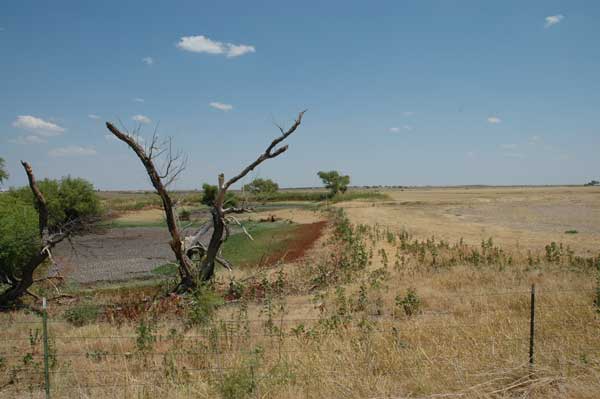
Even with rain, some East Texas pastures could take two years to recover
The agricultural losses from the extended drought are extreme.Frequent wildfires have destroyed fencing, hay supplies and barns, and scorched sparse grazing.Statewide, about 5,500 miles of fence and 2.6 million acres of pasture had been lost to wildfire as of July 8.
September 13, 2011

Many agricultural producers in East Texas are feeling caught between a rock and a ‘hot’ place, according to Texas AgriLife Extension Service personnel.
The agricultural losses from the extended drought are extreme. But added to those costs now are frequent wildfires which have destroyed fencing, hay supplies and barns, and scorched what sparse grazing was left, said Aaron Low, AgriLife Extension agent for Cherokee County.
"Talking with people who are more experienced with drought than I am, they're anticipating that even it if starts raining right now, it's going to be at least two years before our grasses are able to recover from this," Low said.
Low noted that while much of the media coverage has focused later on the loss of private homes and whole neighborhoods, landowners have also suffered huge financial losses of fences and crops that often can’t be replaced by insurance.
Worse, while some fires have been started by truck blowouts and tree falls on power lines, other East Texas wildfires could have been avoided with a little common sense, he said.
"The big fire that started Sunday, west of Alto, was just from a truck parked in tall grass," Low said. "The heat from the car’s catalytic converter started the fire. These guys came up from Houston and were filling up deer feeders, and the next thing, several thousand acres of timber and pasture burned."
The Houston men lost their truck and trailer on land they only leased for hunting. The owner of the deer farm had more than a thousand acres burned.
Other loses from that fire included nearly two miles of fencing on White Oak Creek Ranch, Low said.
"If you figure posts costs $5 each, and there's a post every 10 feet, it starts to add up," he said.
Statewide, about 5,500 miles of fence and 2.6 million acres of pasture had been lost to wildfire as of July 8, according to Dr. Andy Vestal, director of the Texas AgriLife homeland security and emergency management programs.
Also producers have to consider the cost of fuel, Bermuda grass sprigs, fertilizer and labor needed to restore pastures if there is rain, Low said.
"We are talking losses of millions and millions of dollars in East Texas alone," he said.
Meanwhile, regional livestock sale barns, such as Tri-County Livestock Market in New Summerfield, have reported about double the norm for cattle sales for an "extended period," Low said.
"Our sale barn owners and managers are extremely worried that they're going to have a rough time staying in business next year just for the simple fact there's not going to be any cattle to sell," he said.
More information on the current Texas drought and wildfire alerts can be found on the AgriLife Extension Agricultural Drought Task Force website at http://agrilife.tamu.edu/drought/.
You May Also Like



